New technologies are expected to appear in the next two decades that will revolutionize every aspect of human life. The arrival of new AI, quantum computing, 5G, IoT, and human enhancement technology is about to revolutionize the way we live. The report looks closely at twenty pioneering advancements that will cause this revolution and alter the world we know.
Introduction: Witnessing an Era of Unprecedented Innovation
Nowadays, there is a fast, continuous growth in technology. Just twenty years back, smartphones were very basic, most people could not access the fast internet, and artificial intelligence was still featured mostly in science fiction. Currently, AI-based systems decide fast in numerous situations, 5G enables many billions of devices to be connected at once, and blockchain is changing the global financial system.
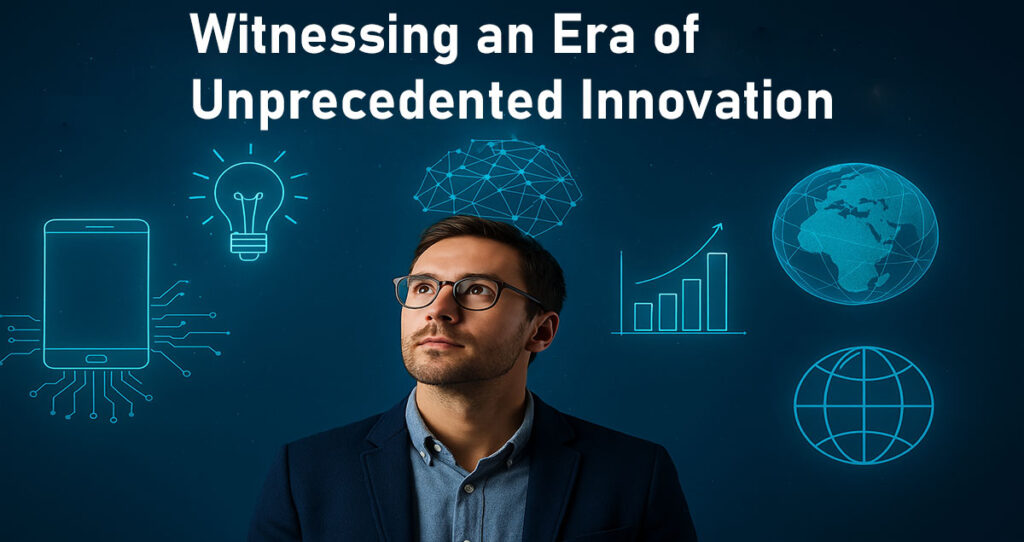
The next twenty years will bring great technological progress that goes far beyond what we imagine right now. Because of this digital revolution, healthcare, managing energy, getting around, and nearly all areas of daily living will change. New advancements that looked impossible even decades ago are now possible because of AI, quantum computing, and immersive reality.
It carefully looks into twenty major technologies that are expected to play a big role in the coming years. By looking closely at data and expert opinions, we can find out the ways these changes will impact our jobs, how we live, and how we communicate with the world at large.
Artificial Intelligence and Machine Learning: The Driving Force
The digital transformation is being pushed forward by artificial intelligence and machine learning, and they are just beginning their journey. In the following twenty years, expect these technologies to be tightly woven into our everyday lives, handling jobs from intricate medical assessments to quick identification of fraud.
- Summary of Impact: Industry experts believe that the AI market is on track to reach $190 billion by 2025.
- Applications: Covering intelligent conversational agents, virtual helpers, advanced predictive tools, and technology that works on its own.
- Advancement: New developments are being found in the fields of Natural Language Processing (NLP), Computer Vision, and Reinforcement Learning.
Its main trait is that AI no longer depends on people to learn and adapt by itself, unlike what happened in the past. Systems will sense when you are home or in surgery and make the changes for you, so the technology will be hard to notice at times.
Nevertheless, significant challenges persist. Problems like biased algorithms, worries about data privacy, and job loss are leading people to discuss the right way to introduce AI. Growth and maturity of these technologies will likely create better, regulated, and transparent systems everywhere.
Key Highlights:
- Continuous automation of business operations
- Highly personalized customer experiences
- Real-time data analysis and decision-making capabilities
- AI-powered innovations in autonomous vehicles and robotics
5G Technology and Beyond: The Connectivity Revolution
The 5G revolution is currently underway, but within twenty years, we’ll likely experience 6G or even 7G network capabilities. These advanced networks will not only deliver unprecedented speeds and minimal latency but also enable a fully immersive, real-time connected ecosystem.
Why 5G Represents a Paradigm Shift:
- Speeds that could be 100 times as fast or faster than 4G
- Millisecond-level latency for instant response
- Seamless connectivity supporting billions of devices simultaneously
These new networks will completely support smart cities, self-driving cars, and instant factory automation. As an illustration, self-driving cars will share information quickly with other vehicles and features on the road, which will cut down accidents and regulate traffic better.
Still, several obstacles need to be overcome—the money needed for infrastructure and the complexity of regulations are impeding worldwide rollout. These obstacles will likely diminish through innovations in network slicing, spectrum optimization, and satellite integration technologies.
Projected Impact by 2026:
| Parameter | Projection |
| Market Value | $667.95 billion |
| Device Connectivity | Over 30 billion IoT devices |
| Major Players | Ericsson, Huawei, Qualcomm |
Internet of Things (IoT): Creating a Hyperconnected Ecosystem
Imagine if your refrigerator knew to order groceries for you, your watch checked your heart rate all the time, and your car set up avoidance appointments for you. This is a demonstration of the Internet of Things (IoT), in which various devices exchange information and act together automatically during real-time conditions.
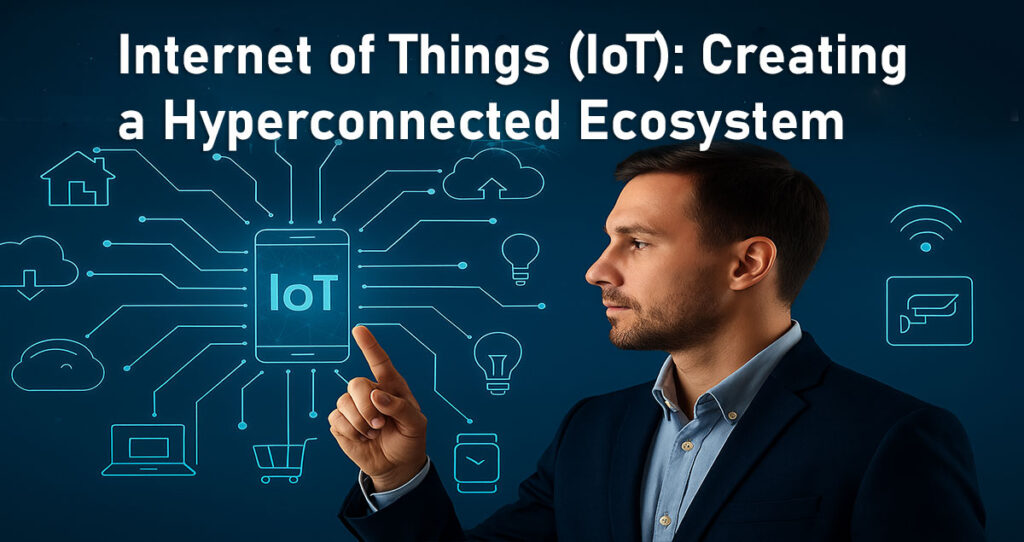
IoT’s transformative influence will impact numerous sectors:
- Healthcare: Patient data is continuously gathered, and emergency call centers receive automatic alerts.
- Manufacturing: Intelligent factories using predictive maintenance.
- Urban Planning: Smart ways to control traffic and supervise pollution in cities.
While cybersecurity is very helpful, it still poses a significant problem. When there are more devices on the network, the number of possible attack targets grows very fast. Still, the market is expected to grow to $1.6 trillion by 2025 because more people are using smart homes, wearable gadgets, and industrial sensors.
Core Benefits of IoT:
- Data-driven decision-making processes
- Enhanced operational efficiency across industries
- Real-time insights and automated alerts
- Significant cost savings through intelligent automation
Edge Computing: Enabling the Real-Time Digital Era
Cloud computing made it possible to handle much more data, and edge computing adds the advantage of being speedier by processing information quickly where data is collected. Applications such as autonomous vehicles and surgical robots will strongly benefit from this ability to act quickly.
Why Edge Computing Matters:
- Dramatically reduces latency and bandwidth requirements
- Enhances performance for time-sensitive applications
- Increases system reliability by reducing centralized dependencies
Edge computing proves particularly transformative for Industrial IoT and mission-critical systems. Having the ability to process data in real time at the edge lessens the chances of holes in operating procedures and makes safety better.
Handling distributed edge networks is not simple because it requires a lot of resources. It relies on building strong networks and having detailed real-time data processing. In spite of these difficulties, the market should rise from $4 billion in 2020 to $15.7 billion by 2025, thanks to the use of 5G and IoT.
Blockchain Technology: Revolutionizing Trust and Transactions
Blockchain is used in various ways besides just cryptocurrency. Blockchain will support and ensure trust across supply chains and the management of digital identities as our world goes more decentralized.
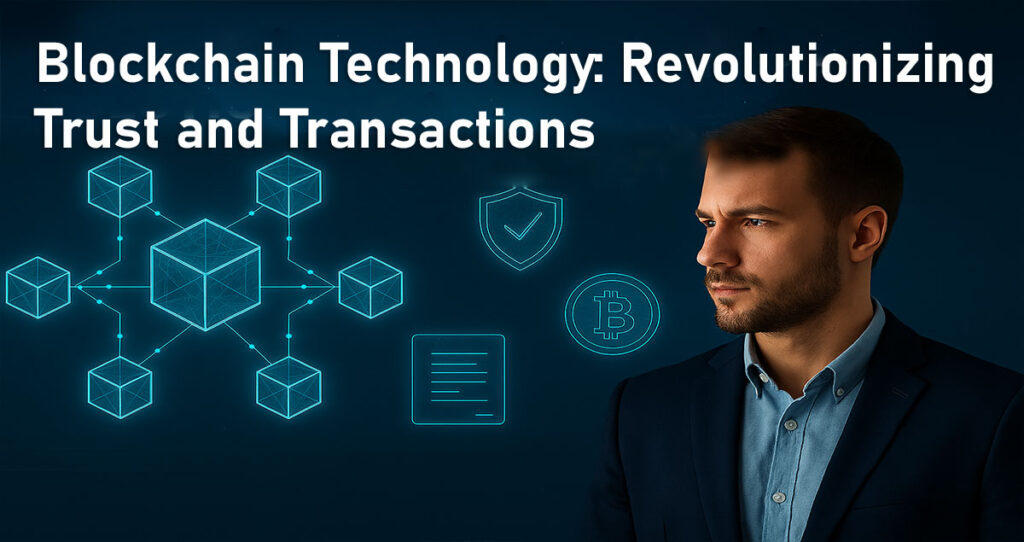
Core Features:
- Decentralization of control and verification
- Complete transparency in transactions
- Immutable record-keeping capabilities
Blockchain applications continue expanding across industries:
- Finance: Secure, rapid cross-border payment systems
- Healthcare: Immutable patient record management
- Logistics: Transparent supply chain tracking and verification
Some difficulties in this technology include using a lot of energy and not being able to scale to match demand. Whilst these issues exist, the blockchain sector is predicted to grow to $39.7 billion by 2025 to satisfy the need for transparent and decentralized systems.
Advantages at a Glance:
- Fraud-resistant transaction systems
- Elimination of intermediary requirements
- Enhanced compliance and audit capabilities
These technologies, Augmented Reality (AR) and Virtual Reality (VR), are Shaping Human Experience
By the year 2040, Augmented Reality (AR) and Virtual Reality (VR) will become widely used and will transform learning, work, leisure, and social interaction. For example, these technologies are now used in real estate, education, healthcare, manufacturing, and retail as well.
Key Differentiators:
AR merges digital content onto the actual environment around us (as seen in).
- Pokémon Go, IKEA Place).
- VR creates completely immersive virtual environments using specialized headsets and spatial audio.
In educational settings, students will explore ancient civilizations and complex scientific structures through three-dimensional environments. Medical professionals will train using incredibly realistic simulations, while architects will guide clients through virtual buildings before construction begins.
By 2025, the AR/VR market is expected to reach $29.2 billion, driven by:
- 5 G-enabled low-latency streaming capabilities
- More affordable VR headset options
- Increasingly powerful graphics processors
However, challenges including hardware costs, motion sickness issues, and limited developer tools create barriers to widespread adoption. As prices decrease and technology advances, we’ll witness the seamless blending of physical and virtual realities becoming standard in daily life.
AR/VR Use Cases by Industry:
| Industry | Application |
| Real Estate | Virtual property tours |
| Healthcare | Surgery simulation, patient therapy |
| Retail | Virtual try-ons, interactive displays |
| Education | Immersive historical and science lessons |
| Gaming | Fully interactive entertainment |
Quantum Computing: Breaking Through Traditional Limitations
With quantum computing, scientists expect to get past difficulties that regular computers fail to resolve. Using qubits that have multiple states at the same time, quantum systems solve problems at a much greater speed than conventional machines.
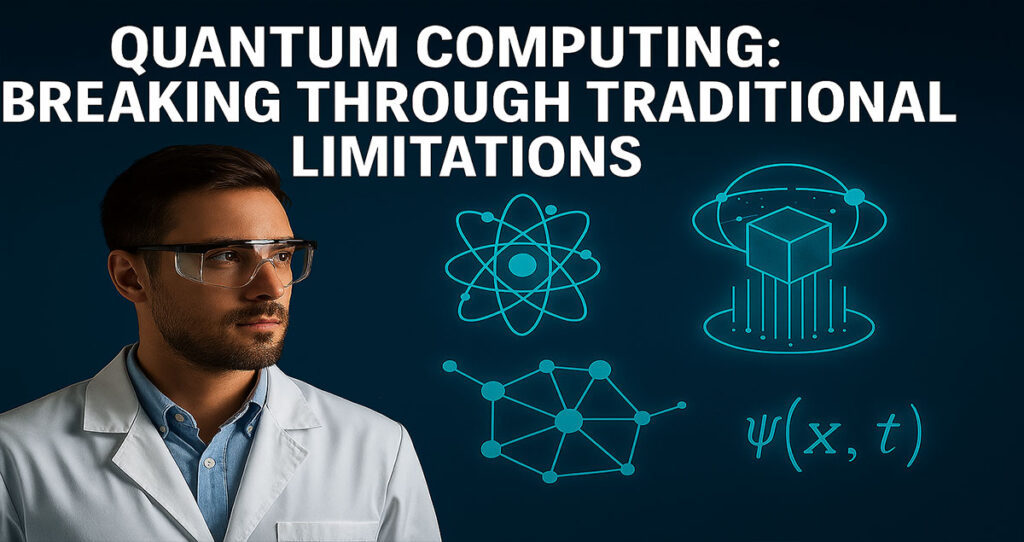
While still in experimental phases, by 2045, quantum computing could:
- Revolutionize drug discovery through molecular interaction simulation
- Render current encryption standards obsolete, necessitating quantum-safe cybersecurity
- Optimize supply chains at previously unimaginable scales
Major technology companies like IBM, Google, and Microsoft are allocating huge sums of money to this area. The Sycamore quantum processor produced by Google was able to manage tasks that current supercomputers will not be able to finish in thousands of years.
Challenges Ahead:
- Qubits remain fragile and error-prone
- Extreme cooling requirements (near absolute zero temperatures)
- Practical, scalable applications are still under development
Even with these difficulties, the quantum computing market is expected to reach a size of $64.98 billion by 2030, mainly because of early adopters in the pharmaceutical, financial, logistics, and cybersecurity industries.
Robotic Process Automation (RPA) has led to the introduction of Digital Workers.
RPA is helping to reshape workplaces by taking care of monotonous activities, which leaves room for workers to take on challenging projects. Robotic Process Automation (RPA) is modernizing the way businesses work in areas like billing and customer care.
Key Advantages:
- Continuous 24/7 operation without fatigue
- Near-perfect accuracy rates
- Rapid deployment and scalability options
The financial sector has embraced RPA for compliance monitoring, auditing processes, and transaction management. In customer service, automated systems handle frequently asked questions, schedule appointments, and collect client information.
However, concerns about job displacement are legitimate. Companies must balance automation benefits with human employment needs. For RPA to be sustainable, companies need clear reskilling and redesign programs.
It is expected that the RPA industry will progress from $1.89 billion in 2020 to $3.74 billion by 2028, which makes it a major part of building digital transformation solutions.
Enhancing Cybersecurity: Defense in a Hyperconnected World
As new technological advances happen, cyber threats also change. Everything linked to the internet could be used as an entry point by attackers. Eventually, every person and organization will need cybersecurity, since it will be crucial for all.

Emerging Cybersecurity Trends:
- AI-Driven Threat Detection: Real-time response to zero-day attacks
- Zero Trust Architecture: Double-check everything and don’t ever trust full-heartedly
- Quantum Encryption: Future-proofing against quantum decryption capabilities
Cyberattacks now cover much more than data theft; they may bring down hospitals, impact financial markets, or threaten smart infrastructure. That’s why financial, government, and healthcare sectors are quick to use new technologies intended to detect and block digital threats.
To beat cybercriminals, it is important to keep innovating. The Cybersecurity market is expected to reach $248.26 billion by 2024, and it is likely to keep increasing as people rely more on technology.
Top Cybersecurity Practices for the Future:
- Continuous monitoring and threat exposure countermeasures (CTE)
- AI-based risk management frameworks (AI TRiSM)
- Biometric and behavior-based authentication systems
- Global cybersecurity governance and cooperation initiatives
Sustainable Technology: Building a Greener Future
As climate change happens faster worldwide, technology is getting more important in creating a sustainably designed world. Over the following two decades, breakthroughs in clean power, capturing carbon, and green-based industry will lead the world’s technology agenda.
Sustainable Tech Pillars:
- Renewable energy sources (solar, wind, hydroelectric)
- Waste reduction and automated recycling systems
- Green data centers and energy-efficient computing solutions
Using technologies will oversee and enhance the way water is used in farms and control air pollution caused by city traffic. Industries are beginning to value resource reuse over throwing away, through using circular models.
It is quite difficult for companies and governments to scale sustainable solutions to a larger scale. A lack of money and old equipment prevent many places from implementing it.
It is predicted that sustainable technology will increase to $36.6 billion by 2027, and transportation, energy, and manufacturing will be its major users.
Human Augmentation: Enhancing Human Capabilities
Consider a time when those who have trouble moving can walk again with high-tech exoskeletons and devices that can be controlled solely by our minds. This is not science fiction; it is real human augmentation. For the following twenty years, this field aims to change the limits of human abilities by uniting biology and advanced technology.
What is Human Augmentation?
Human augmentation covers technologies that help or restore the abilities of people. This includes:
- Smart glasses and brain-computer interfaces (BCIs) are examples of wearable devices.
- Prosthetics can be moved by thinking about movements.
- Exoskeletons that amplify physical strength
Neural implants will be used in healthcare to give some augmented humans improved vision or stronger muscles. Exoskeletons will help people in the military and in industry lift more weight or decrease how tired their bodies get.
There are still a lot of problems revolving around personal information, reasonable use, and ethics. Only permitting rich people to obtain these augmentations raises concerns about worsened social inequality. The idea of enhanced humans also brings up issues related to fairness and how people compete.
Market Outlook:
| Segment | Projection (2027) |
| Wearables | $100+ billion |
| Brain-Computer Interfaces | $5.5 billion |
| Exoskeletons | $12 billion |
| Total Augmentation Market | $298.50 billion |
It goes further than health care; it benefits productivity, safety, and daily living, which makes it one of the biggest forces for change in the upcoming years.
AI-Augmented Software Development: Revolutionizing Code Creation
Human programmers are now helped by AI to improve software development. AI-Augmented Development is bringing changes to the development, testing, and management of software systems.
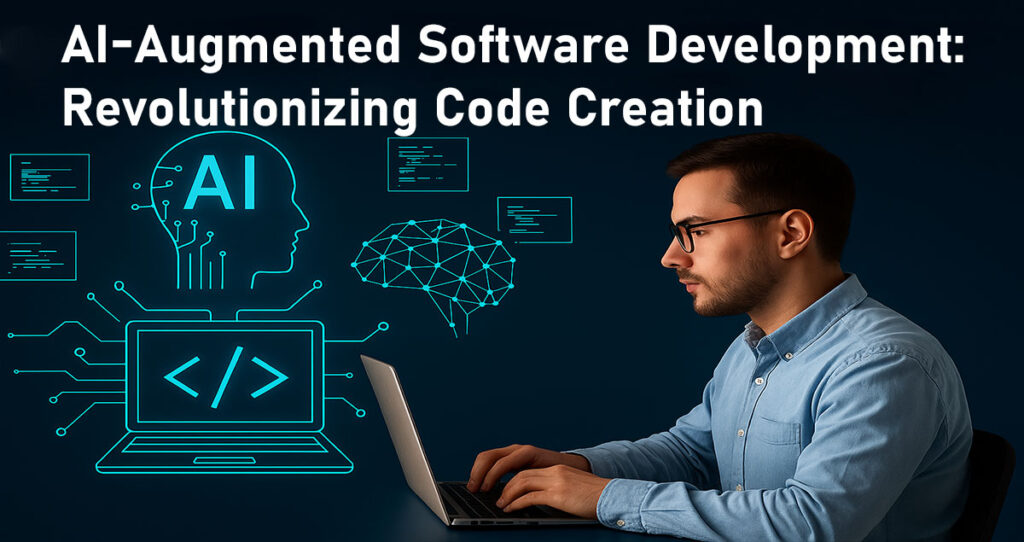
How It Works:
AI tools like GitHub Copilot use machine learning to:
- Automatically complete code segments
- Detect and fix programming bugs
- Suggest an efficient programming logic
- Generate technical documentation
Having these tools, development time is shortened, which allows for faster innovation. Startups often create their Minimum Viable Products (MVPs) in just a few weeks, rather than months. Businesses can greatly lower the costs needed for quality assurance and maintenance.
Nevertheless, too much dependence on AI can create security issues, mainly when programmers do not properly review or assess the code AI provides. Complex and creative software design often depends on human creativity and skill, and AI might replace these roles.
Benefits and Risks:
| Benefit | Potential Risk |
| Faster development timelines | Overreliance on automated logic |
| Increased productivity | Security gaps in auto-generated code |
| Reduced repetitive tasks | Reduced demand for junior developers |
By 2030, virtually every development platform will incorporate AI-driven features, making AI an essential co-pilot for innovation.
Industry Cloud Platforms: Sector-Specific Solutions
The needs of businesses are no longer met by generic cloud options. The next step forward is toward industry cloud platforms that provide tailored solutions for the regulatory, working, and planning needs of industries around finance, healthcare, and manufacturing.
What Makes Industry Clouds Unique?
- Pre-built compliance frameworks (such as HIPAA for healthcare)
- Specialized tools tailored to specific workflows
- Enhanced data analytics and integration capabilities
For example, a healthcare cloud platform includes electronic health record (EHR) management, telehealth integrations, and secure data sharing across providers. Manufacturing clouds offer predictive maintenance algorithms and supply chain analytics.
Because of their benefits, digital platforms need to be adapted and secure to succeed in today’s complex digital world.
The cloud industry is estimated to grow to about $83 billion in 2025 as more companies look for platforms that tackle their own difficulties and ambitions.
Smart Applications: Intelligent Everyday Technology
From applications that diagnose health symptoms to ones that manage personal finances, smart applications are transforming ordinary devices into intelligent, decision-making assistants.
How Smart Apps Work:
The use of AI and ML algorithms is what allows these applications to:
- Personalize user experiences
- Automate routine tasks
- Learn and evolve with user behavior patterns
For example:
- Healthcare: Apps like Ada or Babylon analyze symptoms and suggest treatments.
- Finance: Smart investment tools offer personalized portfolio advice.
- Retail: E-commerce applications recommend products based on behavior and sentiment analysis.
While convenient, smart apps raise data privacy concerns. They collect vast amounts of personal information, and without strict encryption and ethical use policies, user trust can deteriorate quickly.
Nevertheless, their growth remains unstoppable. By 2025, the market is set to reach $62.4 billion, playing a major role in creating digital experiences around users.
Democratized Generative AI: Creativity Without Boundaries
Anyone can use generative AI, it is no longer just for technology giants. Because of DALL·E, ChatGPT, and Midjourney, people can now easily generate world-class content in vast quantities. This is the main idea behind democratized generative AI.
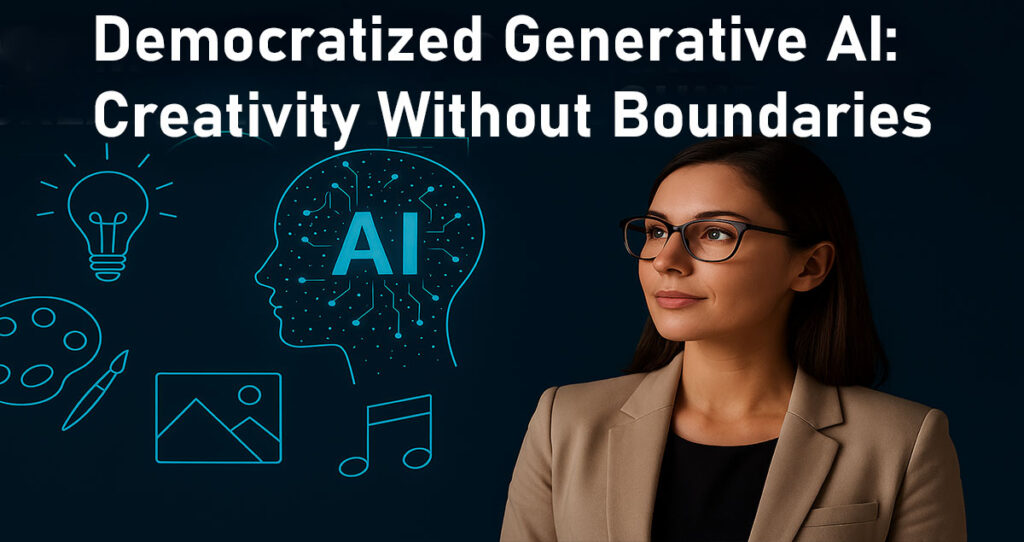
Why This Matters:
- Empowers creative individuals without technical expertise
- Accelerates content production in marketing and design
- Opens new frontiers in gaming, storytelling, and media
For example, marketing teams can generate advertising visuals or copy within seconds. Educators can create personalized learning materials. Musicians can explore infinite compositions with AI assistance.
However, significant concerns arise:
- Copyright violations from AI replicating artists’ styles
- Deepfakes and misinformation campaigns
- Ethical dilemmas regarding originality and authorship
As regulations develop, generative AI will transform from novelty to an essential creative partner in nearly every content-driven industry.
Continuous Threat Exposure Countermeasures (CTE): Proactive Cybersecurity
Since threats to the internet change every day, businesses should check for security problems far more often than just at scheduled check-ups. Countermeasures against Continuous Threat Exposure (CTE) are bringing about a radical change in online security.
What is the meaning of CTE?
CTE requires regularly checking, spotting, and dealing with weaknesses in information technology systems. It works to recognize and stop threats before they reach the government.
Key Features:
- Automated vulnerability scanning
- Real-time risk prioritization
- AI-driven response protocols
- Continuous compliance monitoring
This proactive defense mechanism is essential for industries handling sensitive data, including:
- Healthcare: Protecting patient records and critical systems
- Finance: Preventing fraud and transaction manipulation
- Government: Shielding national databases and communication networks
While highly effective, CTE systems are resource-intensive. They require dedicated cybersecurity teams, AI models trained on threat datasets, and integration across entire digital infrastructures. Still, investing in cybersecurity brings rewards by cutting the chance of a breach, saving expenses, and protecting the brand image.
Because cybercrime is getting more advanced, CTE will take over as the main method for protecting digital information.
AI Trust, Risk, and Security Management (AI TRiSM): Responsible AI Implementation
Since AI is playing a more important role, it is no longer acceptable to ignore whether it is being used safely and ethically. AI Trust, Risk and Security Management (AI TRiSM) gives a useful structure for building, implementing, and managing reliable AI.
Why AI TRiSM Matters:
AI models can exhibit bias, lack transparency, or even pose dangers if misused. AI TRiSM aims to:
- Prevent algorithmic discrimination
- Ensure transparency and explainability
- Monitor AI behavior in real-time
- Safeguard data privacy
For instance,
- In healthcare, it ensures AI diagnostics are fair across all demographics.
- In finance, it prevents discriminatory loan approvals or credit scoring.
- In hiring platforms, it ensures a fair evaluation of all candidates.
Despite being a new framework, AI TRiSM is likely to be required in every business exploring AI, given the upcoming globally set regulations demanding AI accountability.
Framework Components:
| Aspect | Focus Area |
| Governance | Oversight and compliance |
| Ethics | Bias mitigation and transparency |
| Risk Management | AI behavior monitoring |
| Security | Data and model protection |
By 2045, trust-centric AI systems will dominate all sectors, ensuring both innovation and integrity in a world increasingly run by intelligent machines.
Platform Engineering: Scaling Digital Transformation
Digital transformation isn’t only focused on the tools—it also deals with infrastructure. Platform engineering makes sure software development, IT operations, and cloud architecture work together.
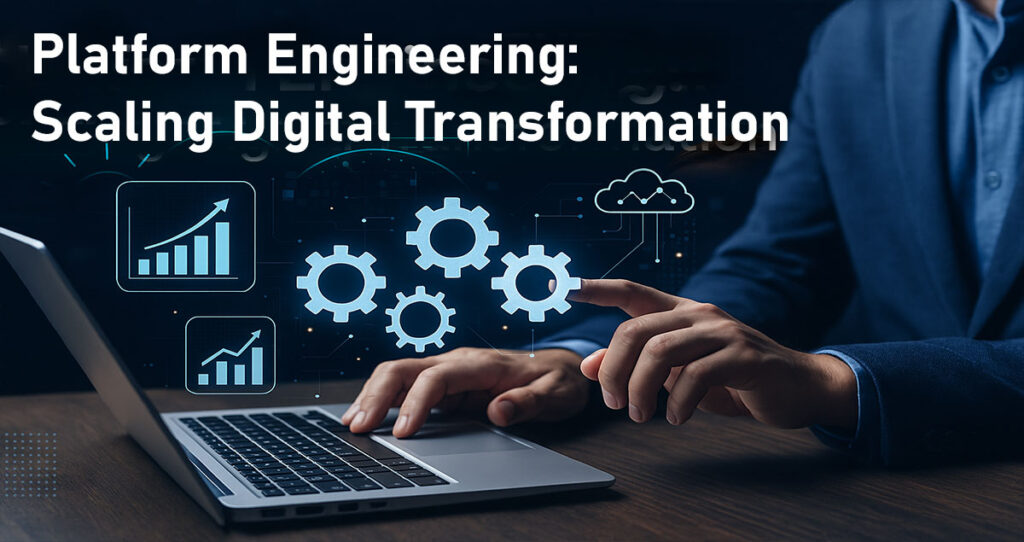
What is Platform Engineering?
It combines different tools, services, and environments so that teams can work more effectively and confidently on building and releasing software.
Key benefits include:
- Streamlined DevOps pipelines
- Reusable architecture components
- Centralized monitoring and governance
An e-commerce company can deal with many customers at once during sales by scaling its site without any downtime. A healthcare provider can securely deploy new patient services across cloud environments.
However, implementing platform engineering is complex. It requires:
- Expert cloud architects
- Investment in automation tools
- Alignment across departments
As businesses prioritize agility and innovation, demand for platform engineering solutions will increase, accelerating delivery while reducing operational complexity.
Machine Customers: The Era of Autonomous Buyers
Imagine AI systems making orders for office supplies, refilling food in the office machines, or renewing the company’s software when necessary. You’re entering an age where robots, algorithms, and systems are deciding what to purchase on behalf of companies or individuals.
Why Machine Customers Are Revolutionary:
- Operate continuously with no downtime
- Eliminate delays and human errors in procurement
- Use predictive analytics to optimize purchasing decisions
For example, a smart factory could automatically reorder parts when inventory runs low, or a digital assistant could manage household groceries based on usage patterns.
While this enhances efficiency, it introduces new challenges:
- Who is accountable if the AI makes poor purchasing decisions?
- How are spending limits and approvals managed?
- What security safeguards are necessary?
Despite these concerns, machine customers are expected to redefine B2B and B2C commerce over the next twenty years, creating an entirely new class of consumer behavior and economic activity.
Augmented Connected Workforce: The Future of Work
Remote work became more common due to the pandemic, yet the coming phase looks at a team that is fully connected and used to digital tools, where being face-to-face isn’t always necessary.
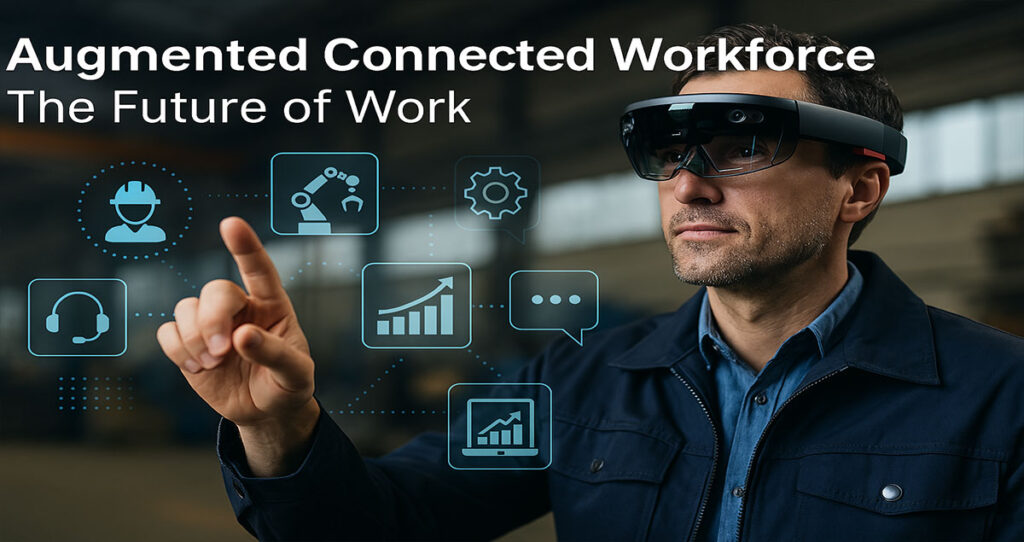
Key Components:
- Remote collaboration tools (Zoom, Microsoft Teams)
- Wearable technology monitors health and productivity
- Real-time AI analytics on team performance
- Mixed reality for virtual meetings and training
This workforce model is particularly critical for global enterprises, frontline workers, and hybrid teams. It makes the work process more efficient, less expensive, and more versatile.
But it also makes people worry about their privacy and ethics:
- Continuous monitoring could feel invasive
- Work-life boundaries may blur
- Unequal access to technology may create productivity gaps
Because it’s predicted that the workforce management tools market will grow to $9.3 billion by 2026, more businesses will prioritize enhancing how they cooperate to stay competitive.
Conclusion: Embracing the Inevitable Future
Humans are about to witness technological progress over the coming twenty years that is unparalleled. Intelligent, flexible, and immersive technologies will come together in the future, driven by artificial intelligence, quantum computing, augmented reality, smart applications, and human augmentation.
Despite these advances, there is now a much larger responsibility for us. Handling privacy, ethics, cybersecurity, and inequality is essential to guarantee that everyone can enjoy the benefits of a tech-reliant future. Being innovative early and acting responsibly will allow companies, governments, and individuals to lead in the new era.
The future of technology is almost here, and because of that, our actions now will affect how well we meet future developments.
FAQs
What sectors will experience the biggest changes because of upcoming technologies?
- Because of AI, IoT, and automation technologies, the largest changes are expected in healthcare, finance, manufacturing, transportation, and education.
Will all jobs be done by AI instead of people in the future?
- Certain routine jobs will be automated by AI, which will also give rise to new roles focused on guidance, ethics, and solving creative challenges. Adapting and gaining new knowledge are the most important.
How can companies get ready for upcoming technology advancements?
- Create technology plans for the future, keep an eye on data security, use AI sensibly, and give priority to caring for the environment and people.
Will the metaverse play a key role in the next stages of technology?
- Experts agree that the metaverse will become a big platform full of AR, VR, blockchain, and different social elements, mainly in entertainment and business.
What do you see as the main difficulty in utilizing new technology?
- The main problems will arise from blending creativity with looking at ethics, privacy, the cost of infrastructure, and sticking to rules.





